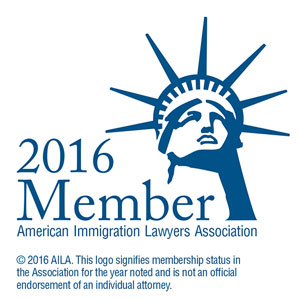REINTERPRETING THE AUTOMATIC CONVERSION PROVISION OF THE CSPA TO HELP DREAM KIDS
The DHS has commendably issued policies urging prosecutorial discretion in recent months recognizing its inability to deport all undocumented immigrants, and designating certain deportable deserving discretion immigrants under a low priority status. Especially noteworthy is the June 17 Morton Memo on prosecutorial discretion, which urges against enforcement of individuals who came to the US as children, and who have successfully graduated from high school or are pursuing college or advanced degrees. Although DREAM Act legislation failed in December 2010, the DHS has nevertheless announced policies that would stay or terminate the deportation of those who came to the US as children and would otherwise have qualified under this legislation to gain legal status.
While the DHS has been using administrative action to ameliorate the hardships for DREAM kids, why can’t it reinterpret a provision in the Child Status Protection Act more consistently with the statute? INA § 203(h)(3), called the automatic conversion provision, has been the subject of much litigation lately, but all this would be unnecessary if the DHS only interpreted it consistent with its plain language and allowed children who were otherwise not eligible under the age protection formula of the CSPA to automatically convert to the new category they may be entitled to and retain the priority date of the original petition.
INA §203(h)(1), introduced by Section 3 of the CSPA, provides the formula for determining the age of a derivative child in a preference petition even if the child is older than 21 years. To qualify as a child under INA §101(b)(1), one must be below the age of 21 and unmarried. The age is determined by taking the age of the alien on the date that a visa first became available (i.e. the date on which the priority date became current) and the immigrant visa petition (Form I-130 or I-140) was approved, whichever came later, and subtracting the time it took to adjudicate the petition (time from petition filing to petition approval). Based on this formula, if the child’s age falls below 21 (even if he or she is over 21 at the time of visa availability), the child is protected under the CSPA. Specifically, §203(h)(1)(A) also requires the alien to have “sought to acquire” LPR status within one year of visa availability.
But what if the child is not protected under this formula? The automatic conversion provision could still come to his or her assistance. This is how §203(h)(3) reads:
Retention of priority date –If the age of an alien is determined under paragraph 1 [which sets forth the age protection formula] to be 21 years of age or older for the purposes of subsections (a)(2)(A) and (d), the alien’s petition shall automatically be converted to the appropriate category and the alien shall retain the original priority date issued upon receipt of the original petition
Like the facts in the latest 5th Circuit decision in Khalid v. Holder, which sensibly interprets the automatic conversion provision, assume that a non-citizen child is 11 years old when his mother’s sister, a US citizen, files an I-130 petition for his mother on January 12, 1996. By the time that the priority date becomes current under the Family Fourth preference in February 2007, the child is 22 and cannot unfortunately avail of CSPA’s age protection formula. His mother, who has now become a Lawful Permanent Resident (LPR) files an I-130 petition on November 23, 2007 for her 22 year old son under the Family 2B preference. It makes no sense for the son to wait another 8 years or longer for the Family 2B date to become current. Under the plain meaning of the automatic conversion provision, §203(h)(3), the earlier priority date of the mother’s sister’s I-130, January 12, 1996, can be retained under the new I-130 petition filed by the mother on behalf of her 22 year old son. If the priority date is retained, her son will not need to wait and can potentially adjust his status immediately under the current January 12 1996 priority date. Under the broad “grandfathering” provision of INA §245(i), since he was the derivative beneficiary of his mother’s I-130 petition filed long before April 30, 20001, he can file an application to adjust status even though he is no longer maintaining status presently.
While it is beyond the scope of this blog to explain the detailed holding behind Khalid v. Holder, and the government’s counter arguments, it is worth mentioning that the 5th Circuit cited with approval an earlier unpublished decision of the Board of Immigration Appeals in Matter of Garcia, No. A79 001 587, 2006 WL 2183654 (BIA June 16, 2006) with identical facts:
In this instance, the principal beneficiary of the original petition was the respondent’s mother, who became a lawful permanent resident of the United States once a visa number became available to her in 1996. The respondent was (and remains) her mother’s unmarried daughter, and therefore the “appropriate category” to which her petition was converted is the second-preference category of family-based immigrants, i.e., the unmarried sons and daughters of lawful permanent residents. Furthermore, the respondent is entitled to retain the January 13, 1983, priority date that applied to the original fourth-preference petition, and therefore a visa number under the second-preference category is immediately available to the respondent.
If Matter of Garcia was followed by the DHS in 2006, there would have been no need for such expensive and needless litigation, and many thousands of children who aged out due to delays in the burgeoning backlogs under the family and employment preferences would have been permanent residents today. Unfortunately, three years later, in Matter of Wang, 25 I&N Dec. 28 (BIA 2009), the BIA reached the opposite result and disregarded Garcia under the rationale that the automatic conversion provision, §203(h)(3), only affirmed limited conversions acknowledged by regulation. For instance, 8 C.F.R. § 204.2(a)(4) provides for “retention” of a priority date for a minor child who was accompanying or following to join a principal beneficiary parent on a second-preference spousal Family 2A petition but then turned 21 before the mother could become a LPR. Under 8 C.F.R. § 204.2(a)(4), if a child ages out prior to the parent being issued the immigrant visa, a separate I-130 petition for that son or daughter is then required, although the original priority date is retained if the subsequent petition is filed by the same petitioner. Khalid v. Holder correctly rejects Wang’s strained interpretation since §203(h)(3), reading it in conjunction with subparagraphs (1) and (2), makes reference to both second preference family petitions and derivatives of all family and employment petitions. It is thus illogical to only consider the reference to the second preference petitions, where minors have been able to retain the original priority date, and to ignore derivatives of all other employment and family petitions, even though explicitly mentioned in §203(h)(3), who can also automatically convert to the “appropriate category” and “retain the original priority date.”
Admittedly, two other circuits have come out differently. The Ninth Circuit in Osorio v. Mayorkas decided that §203(h)(3) was ambiguous and paid Chevron deference to the BIA’s constricted interpretation of this provision in Matter of Wang. The Second Circuit in Li v. Renaud, on the other hand held that the provision was unambiguous, but nevertheless reasoned the provision would only allow someone to retain the priority date to a petition that was filed by the same petitioner. Thus, in the example in Khalid v. Holder, the original petitioner was the child’s aunt, and the new petitioner is his mother, and according to the Second Circuit in Li, which David Isaacson has critically commented on in a prior blog, there could be no automatic conversion.
While it is not the purpose here to discuss the merits of the various holdings, from a policy perspective and in the spirit of the Morton memo on prosecutorial discretion, it would make sense if the Administration withdrew its opposition to a broader interpretation of §203(h)(3) and followed Khaled v. Holder across the country. Currently, Khalid v. Holder is only binding within the 5th Circuit, which comprises Mississippi, Texas and Louisiana. To achieve this, Attorney General Holder would have to issue a new decision reversing Matter of Wang, and consistent with Matter of Garcia and Khalid v. Holder. The Attorney General, through the BIA, has done this before and can do it again if there is truly a will to implement policy consistent with the Morton memo. For example, in Matter of Silva, 16 I&N Dec. 26 (BIA 1976), the BIA acquiesced in Francis v. INS, 532 F.2d 268 (2d Cir. 1976), and allowed 212(c) relief for LPRs in deportation proceedings who had not previously departed and returned, despite its earlier contrary holdings in Matter of Francis and Matter of Arias-Uribe, 13 I&N Dec. 696 (BIA 1971). Of course, if the government still wants to contest, this matter is ripe for review in the Supreme Court due to splits within the circuits, but one questions the wisdom of the government in further contesting this issue when it otherwise supports prosecutorial discretion for DREAM kids.




